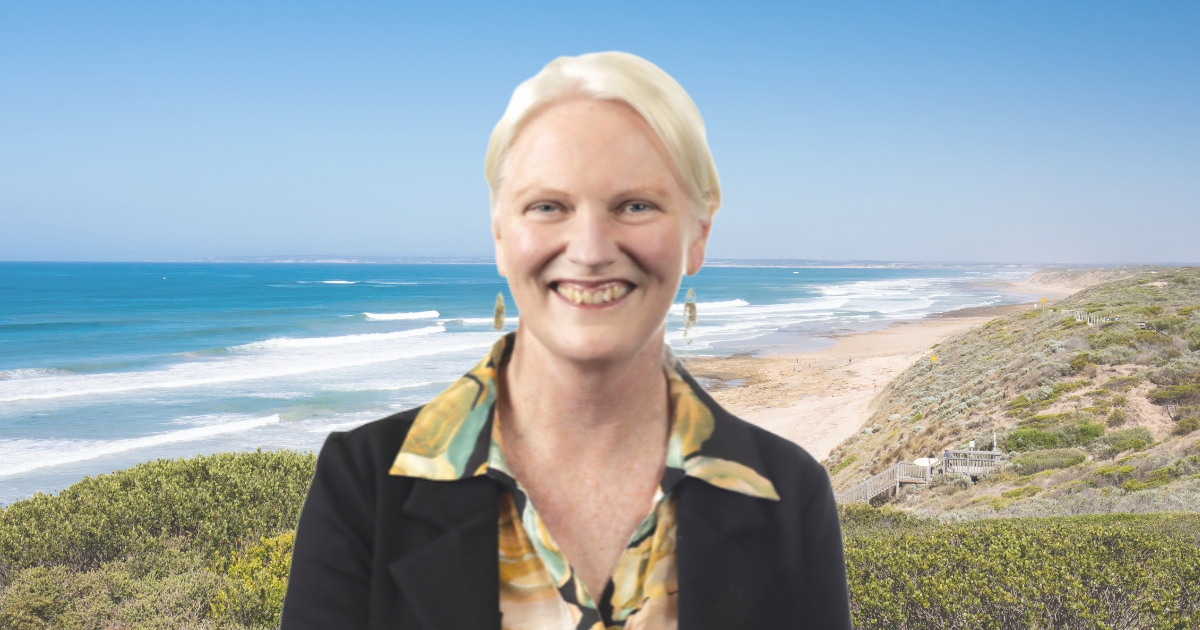Seagrass a marvel of our marine ecosystem
For the many of us who like to spend time on our beautiful north Bellarine beaches, no two days are ever the same.
The landscape is constantly changing with the seasons, the weather, the wind and the tides.
While we all love the postcard perfect ideal of clear blue water lapping onto pristine white sand, a feature of our beaches at certain times of the year is the presence of ‘wrack’ – or seagrass – sometimes in large quantities.
While it’s not all that pleasant to look at, wrack is a natural occurrence that indicates a healthy population of seagrass in the adjoining bay.
Pleasingly, we have witnessed quite prolific regeneration of seagrass meadows in Corio Bay and across the Bellarine Bank in the past few years.
As chair of the council’s Rural and Coastal portfolio, this is of great interest to me because it’s so important to our marine ecosystem.
Seagrass provides critical habitat for many species of fish and marine life, and also assists in preventing beach erosion by reducing wave energy.
By slowing the flow of water and trapping and stabilising sediments, seagrass increases water clarity and improves quality – great for marine life and human visitors alike.
In addition, seagrasses store carbon and generate a significant amount of oxygen through photosynthesis, as well as pumping nutrients from the soil into the water.
Truly a multi-functional marvel of nature!
Wrack generally accumulates on beaches over winter and is then dispersed during spring and summer with the seasonal wave and tide actions.
The City of Greater Geelong receives requests to clean it up, and does so at city-managed beaches in the peak period until Easter each year.
This removal is done on beaches that are short in length and popular for visiting – including at St Leonards (Harvey Park), and in Clifton Springs from the boat harbour jetty ruins to Griggs Creek, at The Dell, and Edgewater Drive.
However, if the seagrass meadows in the bay continue to regenerate, we are likely to see increased accumulation of wrack on our beaches in the future.
While it may be somewhat of an inconvenience on your next stroll along the sand, please take it as a positive reminder about the health of our bay!
Entirely separate from seagrass is kelp, which is an algae that attaches itself to hard surfaces such as reefs.
It is more commonly found washed up on the exposed coast on the southern side of the Bellarine, and is threatened by climate change.
Like seagrass, it plays a vital role in our marine ecosystem, meaning its ongoing presence is very important.
Addressing the threat of climate change
The climate change conversation is coming back into global focus as a result of the recent report from the UN’s Intergovernmental Panel on Climate Change and the upcoming UN Climate Change Conference in Glasgow.
The report certainly made for sombre reading. It projected that at the current rate, the world is likely to reach 1.5C warming by around 2030.
At this threshold, the consequences for Australia are dire – with sea level rise, worse and more frequent fires, fewer days of rainfall but more severe flood events, and increasing droughts.
The council is taking the threat seriously.
Through our draft Climate Change Response Plan, we have set strong targets of net zero emissions for the City of Greater Geelong’s operations by 2025 and net zero region-wide by 2035.
We have already switched all of our operations over to renewable energy, and will progressively transfer our vehicle fleet to electric or hybrid models.
Across the region, we are looking for sustainable solutions to protect and regenerate local biodiversity.
North Bellarine pool
Before I finish, a progress update on the north Bellarine community’s new aquatic facility at the Drysdale Sports Precinct.
A construction tender for stage one of the facility – the 50-metre outdoor pool – has been released, bringing the start of work on the site closer.
The federal government awarded the council $10 million specifically to build a 50-metre outdoor pool, and we are making use of that funding.
We’ve also heard the community’s calls for indoor facilities at this site, and have committed to advocate for a stage two.
We’ll be seeking your feedback soon on what the designs for that second stage should feature – stay tuned to yoursay.geelongaustralia.com.au where you can sign up for project updates.
Cr Jim Mason


















